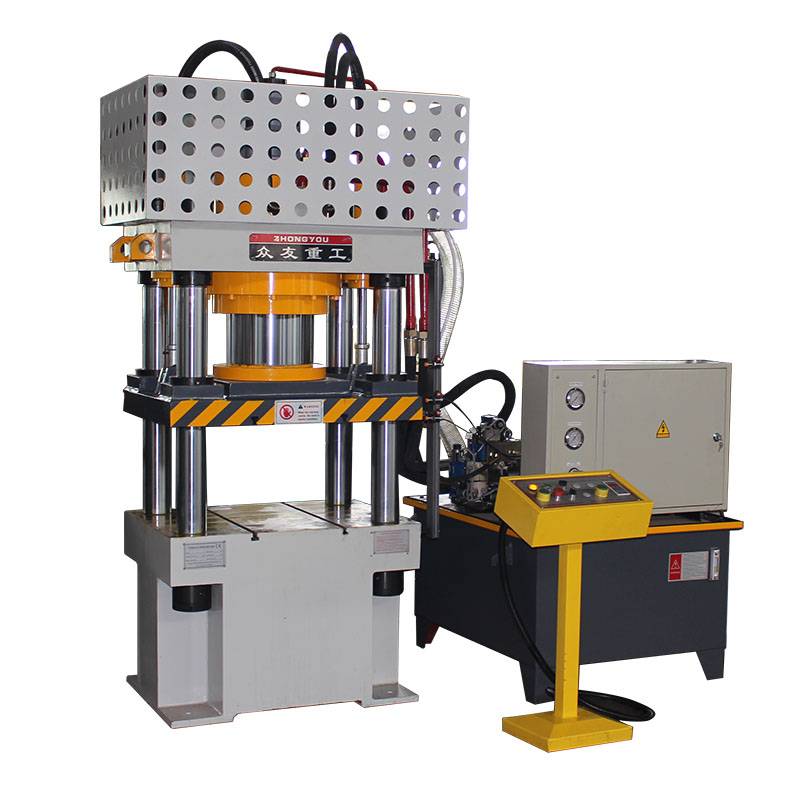four-column die forging hydraulic pressSystem oil leakage is one of the common faults of hydraulic transmission system. According to the oil leakage part, it can be divided into two categories: oil leakage and oil leakage at the connection part. The reasons for self-leakage are very complicated. Some new equipment leaks oil, and some old equipment that has been used for more than 10 years does not leak oil. Completely solve their own oil leakage problem, we must find out the factors and ways of oil leakage. The following is a few typical examples to analyze the causes and solutions of self-leakage.

The finished products of hydraulic parts are not allowed to leak oil, but due to various reasons, the hydraulic pump of the newly manufactured four-column die forging hydraulic press leaks oil from the journal when the oil temperature just reaches 50 ℃ during the debugging of the pump station. From the analysis of the leaking parts, most of them leak from the low-pressure cavity, that is, a large amount of oil from the pressure cavity to the low-pressure cavity (internal leakage). Due to a certain back pressure in the system, a part of the low-pressure oil is leaked. There are also some hydraulic components that do not allow oil return to the low-pressure cavity, such as the shaft extension part of the hydraulic pump. It is common for all kinds of hydraulic pumps to leak oil from the extension of the transmission shaft, especially the self-tightening rotating rubber sealing ring in the journal end cover of the gear pump of the four-column die forging hydraulic press. The causes of oil leakage of such structures are:
(1) The axial clearance of the pump exceeds the specified value, a large amount of pressure oil enters the low pressure area, and the self-tightening rotating rubber sealing ring is flushed to leak oil;
(2) The four-column die forging hydraulic press pump is worn in the system all the year round, which increases the axial gap, and a large amount of pressure oil enters the low pressure area, which will flush the rotating sealing ring and leak oil outward.
(3) For newly processed and assembled hydraulic pumps, the geometric dimensional tolerance of a component in the manufacturing process exceeds the specified value, or the cumulative dimensional tolerance of several components exceeds the specified value.










